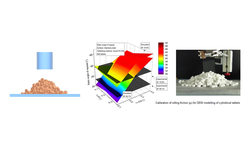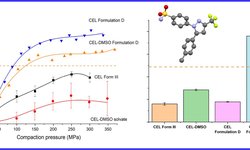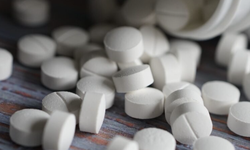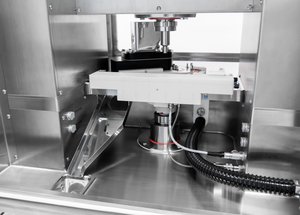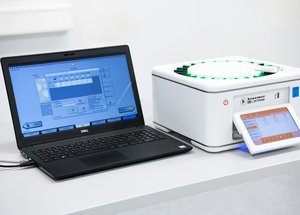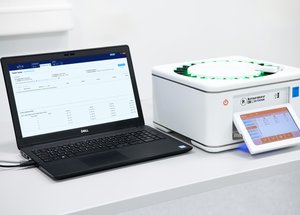Scientific papers
Prior research has shown the advantages of applying dry coating to finely graded microcrystalline cellulose (MCC) to facilitate direct compression (DC), a preferred method in tablet manufacturing. This process enhances flowability while maintaining satisfactory compactability of both placebo and binary blends containing cohesive APIs. In this study, we focus on dry coating two fine brittle excipients, Pharmatose 450 (P450, 19 μm) and Pharmatose 350 (P350, 29 μm), which exhibit poor flowability and compactability. We utilize silica A200 or R972P to assess the DC capability of multi-component cohesive API blends, including coarse acetaminophen (22 μm) and ibuprofen50 (47 μm).
Dry coating P450 and P350 not only improves flowability and bulk density but also enhances tensile strength and processability, contrary to the reported reduction observed with dry coated ductile MCC. While hydrophobic R972P enhances flowability, hydrophilic A200 improves tensile strength. Consequently, A200 is chosen for dry coating P450 in multi-component blends containing fine Avicel PH-105. In blends with coarse acetaminophen, significant increases in bulk density and flowability are achieved without compromising tensile strength, with a lower amount of dry coated P450 being preferable.
Furthermore, when incorporating 60 wt% ibuprofen50, using only 18 wt% of dry coated P450 (equivalent to 0.18 wt% silica in the blend) results in increased flowability, bulk density, tensile strength, and overall processability, enabling successful DC capability.
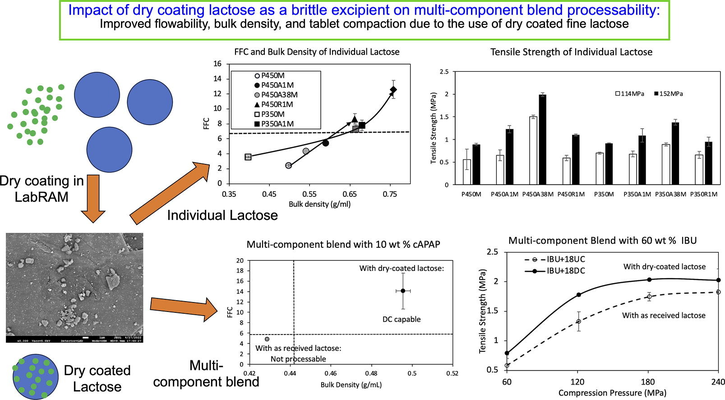
Comments
No comments posted yet.
Add a comment

